This article delves into the delightful world of chia seed coconut milk pudding, a delicious and healthy dessert option that is both satisfying and nutritious. With its creamy texture and rich flavor, this pudding serves as an excellent alternative for those seeking a dairy-free treat. In this guide, we will explore its numerous benefits, provide preparation tips, and offer exciting variations to elevate your culinary experience.
Chia seeds are tiny, nutrient-dense seeds that are rich in fiber, protein, and omega-3 fatty acids. These remarkable seeds offer a plethora of health benefits:
- Improved Digestion: The high fiber content aids in digestion and promotes a healthy gut.
- Heart Health: Omega-3 fatty acids support cardiovascular health by reducing inflammation.
- Weight Management: Chia seeds can help you feel fuller for longer, making them a great addition to weight loss diets.
Coconut milk is a creamy, dairy-free alternative that not only enhances the flavor of puddings but also brings several health advantages:
- Low in Carbohydrates: Ideal for those following ketogenic or paleo diets.
- Rich in Healthy Fats: Provides a source of medium-chain triglycerides (MCTs) that can boost energy levels.
- Delicious Flavor: Adds a tropical twist that complements the nutty flavor of chia seeds.
Preparing chia seed coconut milk pudding is both simple and rewarding. Here’s how to create this delightful dessert:
To make this pudding, you will need:
- 1/2 cup chia seeds
- 2 cups coconut milk
- Sweetener of choice (e.g., honey, maple syrup, or agave)
- Optional flavorings (e.g., vanilla extract, cocoa powder)
The key to achieving the perfect texture lies in the mixing and soaking process. Combine the chia seeds and coconut milk in a bowl, whisking thoroughly to prevent clumping. Allow the mixture to sit for at least 30 minutes or overnight in the refrigerator for optimal absorption and flavor infusion.
Chia seed coconut milk pudding is incredibly versatile and can be customized with various flavors:
- Vanilla: Add a splash of vanilla extract for a classic taste.
- Cocoa: Mix in cocoa powder for a chocolatey delight.
- Fruits: Top with fresh fruits like berries, bananas, or mango for natural sweetness and color.
Fruits not only enhance the visual appeal but also add natural sweetness. Some excellent choices include:
- Strawberries
- Blueberries
- Kiwi
Spices and extracts can elevate the flavor profile of your pudding. Consider adding:
- Cinnamon: For a warm, comforting taste.
- Nutmeg: To introduce a hint of spice.
- Almond Extract: For a nutty undertone.
Proper storage is essential for maintaining the freshness of your pudding. Store leftovers in an airtight container in the refrigerator, where they can last up to five days.
Understanding the nutritional content of your dessert helps in making informed dietary choices. A typical serving may contain:
- Calories: Approximately 200
- Fats: 12g
- Protein: 4g
- Carbohydrates: 18g
This pudding is not only delicious but also caters to various dietary needs, making it accessible for everyone. It is:
- Vegan: Free from animal products.
- Gluten-Free: Safe for those with gluten sensitivities.
- Low-Carb: A great option for low-carb diets.

What Are Chia Seeds and Their Benefits?
Chia seeds, derived from the Salvia hispanica plant, have gained immense popularity in recent years due to their impressive nutritional profile and numerous health benefits. These tiny seeds are not only versatile but also incredibly easy to incorporate into various meals. Let’s delve into what makes chia seeds a superfood and how they can enhance your overall well-being.
Chia seeds are nutrient-dense powerhouses packed with essential nutrients. They are particularly high in:
- Fiber: Chia seeds contain about 10 grams of fiber per ounce, which promotes healthy digestion and helps regulate bowel movements.
- Protein: With approximately 4 grams of protein per ounce, they provide a plant-based source of this essential nutrient, making them an excellent choice for vegetarians and vegans.
- Omega-3 Fatty Acids: Chia seeds are one of the richest plant sources of omega-3s, which are crucial for heart health and brain function.
- Antioxidants: They are loaded with antioxidants that help combat oxidative stress and inflammation in the body.
Incorporating chia seeds into your diet can lead to several health benefits:
- Improved Digestion: The high fiber content aids in digestion and can help prevent constipation.
- Heart Health: Omega-3 fatty acids and fiber work together to lower cholesterol levels and reduce the risk of heart disease.
- Weight Management: Chia seeds can absorb up to 10-12 times their weight in water, promoting a feeling of fullness and reducing overall calorie intake.
- Bone Health: They are rich in calcium, magnesium, and phosphorus, all of which are important for maintaining strong bones.
Additionally, chia seeds are incredibly versatile. They can be added to smoothies, yogurt, oatmeal, or baked goods, making them an easy addition to any meal. Their ability to absorb liquid also makes them a popular choice for creating puddings and gel-like textures.
To maximize the benefits of chia seeds, it’s essential to consume them in their soaked form or ground. Soaking them in water or milk allows them to expand, making nutrients more bioavailable and easier to digest. Ground chia seeds can be used in baking or as a thickening agent in recipes.
Overall, chia seeds are a simple yet effective way to boost your nutritional intake. Their numerous health benefits, combined with their ease of use, make them an excellent addition to any diet. Whether you’re looking to improve your digestion, support heart health, or simply add a nutritious element to your meals, chia seeds are a fantastic choice.
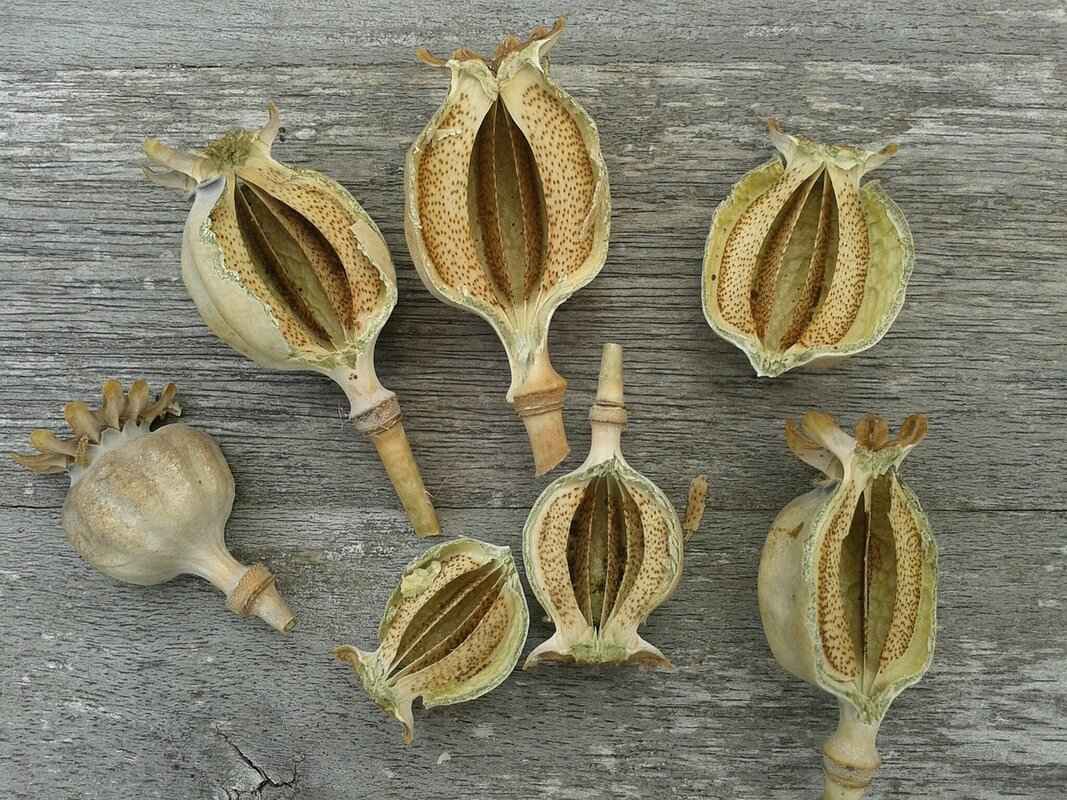
Why Choose Coconut Milk for Pudding?
Coconut milk is not just a delightful ingredient; it is a nutrient-rich powerhouse that elevates the flavor and texture of puddings. This dairy-free alternative is becoming increasingly popular among health-conscious individuals and food enthusiasts alike. But why should you specifically choose coconut milk for your pudding? Let’s delve into its numerous benefits and unique characteristics.
One of the standout features of coconut milk is its creamy texture. Unlike traditional dairy, coconut milk provides a rich and velvety consistency that makes puddings incredibly satisfying. This is particularly beneficial for those who are lactose intolerant or follow a vegan lifestyle. Furthermore, coconut milk is naturally sweet, which can enhance the overall flavor of your dessert without the need for excessive added sugars.
For those adhering to ketogenic or paleo diets, coconut milk is an excellent choice due to its low carbohydrate content. It is rich in medium-chain triglycerides (MCTs), a type of fat that is easily digestible and can be quickly converted into energy. This makes coconut milk not only a delicious option but also a functional ingredient that supports sustained energy levels.
Coconut milk is packed with essential nutrients such as vitamins C, E, and several B vitamins. Additionally, it contains minerals like magnesium, potassium, and iron, contributing to overall health and wellness. Incorporating coconut milk into your pudding not only enhances flavor but also adds a nutritional boost that can benefit your body.
The versatility of coconut milk allows it to pair beautifully with various flavors. Whether you prefer a classic vanilla pudding or something more adventurous like chocolate or mango, coconut milk complements these flavors without overpowering them. Its natural sweetness means you can often reduce the amount of sweetener needed, making your dessert healthier.
- Choose the Right Type: Look for full-fat coconut milk for a creamier texture, or light coconut milk for a lower-calorie option.
- Mix Well: Ensure that the coconut milk is thoroughly mixed with other ingredients to achieve a uniform consistency.
- Let it Set: Allowing the pudding to chill for a few hours helps it thicken and enhances the flavor.
The health benefits of coconut milk extend beyond its low-carb, high-fat profile. It has been linked to improved heart health due to its ability to increase good cholesterol levels. Additionally, the anti-inflammatory properties of coconut milk can support digestive health and boost the immune system. This makes it a wonderful addition to not just desserts, but also smoothies and savory dishes.
While coconut milk is generally safe for most people, those with allergies to coconuts should avoid it. It is also a great option for individuals looking for gluten-free or vegan alternatives. Its rich flavor and creamy texture make it a favorite among various dietary preferences, ensuring that everyone can enjoy a delicious pudding.
In summary, choosing coconut milk for your pudding is not just a matter of taste; it’s a step towards a healthier dessert option that caters to various dietary needs. With its creamy texture, rich flavor, and numerous health benefits, coconut milk is a versatile ingredient that can transform your pudding into a delightful treat.

How to Prepare Chia Seed Coconut Milk Pudding?
Preparing chia seed coconut milk pudding is a delightful and straightforward process that requires only a few essential ingredients. This creamy, nutritious dessert is not only delicious but also packed with health benefits, making it perfect for any time of day. Below, we outline the simple steps to create this tasty pudding, ensuring you can whip it up effortlessly.
To make the perfect chia seed coconut milk pudding, you will need:
- Chia Seeds: These tiny seeds are the star of the dish, providing texture and nutrition.
- Coconut Milk: Use full-fat coconut milk for creaminess, or light coconut milk for a lower-calorie option.
- Sweetener: Choose from honey, maple syrup, or a sugar substitute to taste.
- Flavorings: Optional additions like vanilla extract, cocoa powder, or fresh fruits can enhance the flavor.
The key to achieving the right texture lies in the mixing and soaking process. Begin by combining your chia seeds and coconut milk in a bowl or jar. Stir well to prevent clumping. Once mixed, add your desired sweetener and flavorings. Here’s a simple method:
1. In a mixing bowl, combine 1 cup of coconut milk with 1/4 cup of chia seeds.2. Add 1-2 tablespoons of your chosen sweetener.3. Mix thoroughly until all ingredients are well combined.4. Allow the mixture to sit for about 5 minutes, then stir again to ensure the chia seeds are evenly distributed.5. Cover and refrigerate for at least 2 hours, or overnight for best results.
Chia seed coconut milk pudding is incredibly versatile. Here are some popular variations to consider:
- Chocolate Delight: Add 2 tablespoons of cocoa powder for a rich chocolate flavor.
- Berry Bliss: Mix in fresh or frozen berries before soaking for a fruity twist.
- Vanilla Dream: Incorporate a teaspoon of vanilla extract for a classic taste.
Fruits not only enhance the flavor but also add natural sweetness and vibrant colors to your pudding. Consider topping your pudding with:
- Bananas: Sliced bananas add creaminess and sweetness.
- Berries: Blueberries, strawberries, or raspberries provide a tart contrast.
- Mango: Fresh mango chunks offer a tropical flair.
To elevate the flavor profile, consider adding spices and extracts. Here are some suggestions:
- Cinnamon: A dash of cinnamon adds warmth and depth.
- Nutmeg: A pinch of nutmeg can provide a cozy, aromatic touch.
- Almond Extract: A few drops can impart a delightful nutty flavor.
Proper storage is essential for maintaining the freshness of your pudding. Store any leftovers in an airtight container in the refrigerator. The pudding can last for up to 5 days, making it an ideal make-ahead dessert.
By following these simple steps, you can create a delicious and nutritious chia seed coconut milk pudding that satisfies your sweet cravings while offering a wealth of health benefits. Enjoy experimenting with different flavors and toppings to make this dessert your own!
Gathering Your Ingredients
When it comes to creating a delicious and healthy dessert, chia seed coconut milk pudding stands out as a fantastic option. The process begins with gathering your ingredients, which is crucial for achieving the perfect texture and flavor. Below is a comprehensive list of what you’ll need to make this delightful pudding.
- Chia Seeds: The star ingredient, chia seeds are packed with nutrients. They absorb liquid and expand, creating a gel-like consistency that is essential for pudding.
- Coconut Milk: Opt for full-fat coconut milk for a creamier texture. You can also use light coconut milk if you’re looking for a lower-calorie option. It adds a rich, tropical flavor to your pudding.
- Sweetener: Choose your preferred sweetener to enhance the flavor. Popular options include maple syrup, honey, or agave nectar. For a sugar-free alternative, consider using stevia or erythritol.
- Flavorings (Optional): To elevate your pudding, you can include flavorings such as vanilla extract, cocoa powder, or cinnamon. These additions will give your pudding a unique twist.
- Fruit Toppings (Optional): Fresh fruits like berries, mango, or banana not only add sweetness but also provide a burst of color and nutrients.
Once you have gathered all your ingredients, you’re ready to move on to the preparation stage. The simplicity of this recipe allows for quick assembly, making it an excellent choice for a healthy snack or dessert.
For those who prefer a more substantial pudding, consider adding nut butters or yogurt for added creaminess and flavor. These ingredients can enhance the nutritional profile and make the pudding even more satisfying.
As you prepare your pudding, remember that the ratio of chia seeds to liquid is vital. A common ratio is 1:4, meaning for every tablespoon of chia seeds, you should use four tablespoons of coconut milk. Adjusting this ratio can lead to different textures, so feel free to experiment based on your preference.
In summary, gathering the right ingredients is the first step in creating a delightful chia seed coconut milk pudding. With these components at hand, you can create a healthy, delicious dessert that is not only easy to make but also customizable to suit your taste.
Mixing and Soaking the Ingredients
When it comes to creating the perfect chia seed coconut milk pudding, the importance of the mixing and soaking process cannot be overstated. This step is crucial for achieving the desired texture and ensuring that the flavors meld beautifully. In this section, we will explore how to properly combine the ingredients for optimal absorption and flavor infusion.
Mixing the ingredients thoroughly is the first step in the preparation process. When you combine chia seeds with coconut milk, you initiate the absorption process. Chia seeds can absorb up to 12 times their weight in liquid, which is essential for creating that delightful pudding-like consistency. To achieve this:
- Start by measuring out your chia seeds and coconut milk. A common ratio is 1/4 cup of chia seeds to 1 cup of coconut milk.
- In a bowl, whisk the coconut milk until smooth, then gradually add the chia seeds, stirring continuously to prevent clumping.
- Add your desired sweetener and flavorings at this stage to ensure they are evenly distributed.
Once the ingredients are mixed, the next vital step is soaking. This is where the chia seeds expand and absorb the liquid, transforming into a gel-like texture. To soak effectively:
- Cover the mixture and let it sit at room temperature for about 10-15 minutes. During this time, stir the mixture again to break up any clumps that may form.
- After the initial soak, transfer the pudding to the refrigerator for at least 2 hours or overnight. This extended soaking time allows for maximum absorption, resulting in a creamier texture.
Temperature plays a significant role in the soaking process. When the mixture is kept at a cooler temperature, the chia seeds will absorb the coconut milk more slowly, allowing for a gradual thickening. This can enhance the final texture of your pudding. If you prefer a quicker method, you can soak the mixture at room temperature, but be prepared for a slightly different consistency.
During the soaking process, the flavors have a chance to meld together, creating a more cohesive taste experience. To enhance flavor infusion:
- Consider adding spices like cinnamon or vanilla extract right after mixing. These ingredients will permeate the pudding as it soaks.
- Fruit purees or zests can also be added at this stage for a unique twist. For example, a splash of orange zest can brighten the overall flavor profile.
In summary, the mixing and soaking process is pivotal in crafting a delicious chia seed coconut milk pudding. By ensuring that the ingredients are well combined and allowing ample time for soaking, you will achieve a pudding that is not only flavorful but also has the perfect texture. Enjoy experimenting with different ingredients and flavors to make this delightful dessert your own!
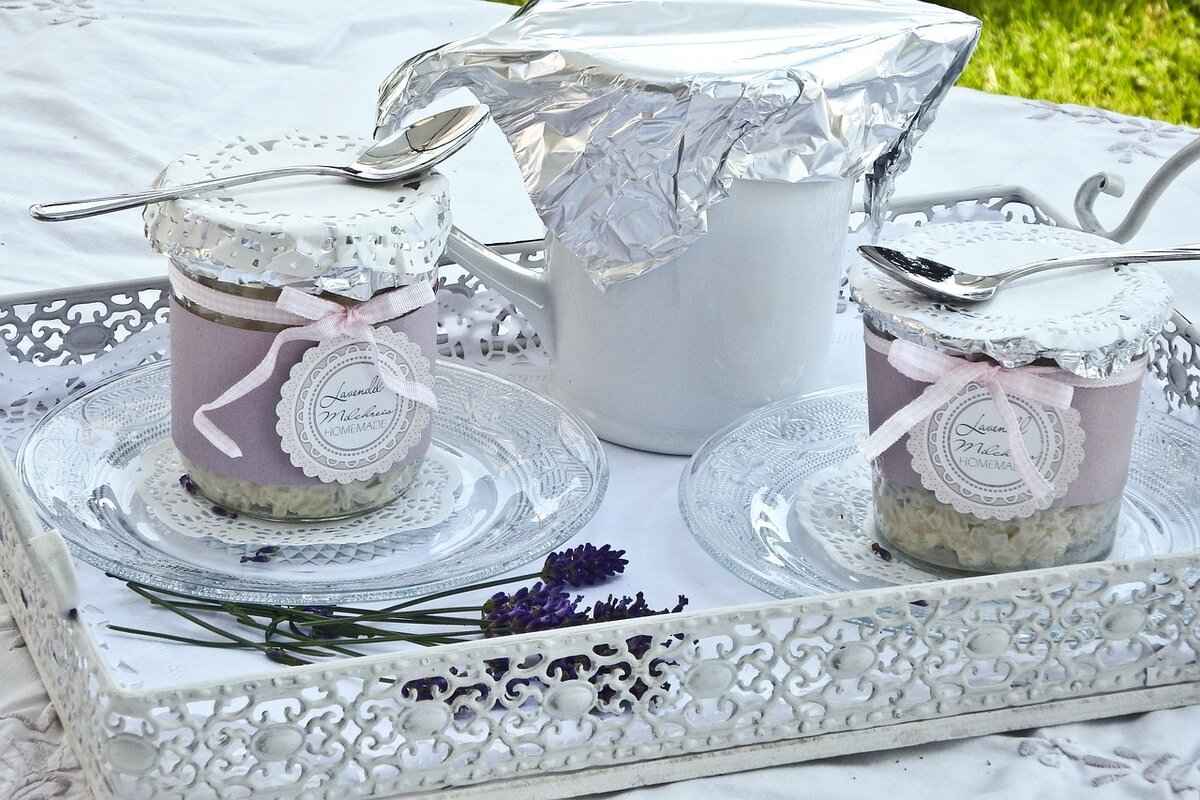
What Are Some Flavor Variations for This Pudding?
Chia seed coconut milk pudding is not only a delightful treat but also a canvas for your culinary creativity. The base of this pudding is rich and creamy, making it an ideal foundation for a variety of flavors and toppings. In this section, we will explore some exciting variations that can elevate your pudding experience.
There are numerous ways to enhance the flavor of your chia seed coconut milk pudding. Here are some popular additions:
- Vanilla Extract: Adding a splash of vanilla extract can create a warm and inviting flavor. It pairs beautifully with the creaminess of coconut milk.
- Cocoa Powder: For chocolate lovers, incorporating unsweetened cocoa powder can transform your pudding into a rich dessert. This addition not only provides a deep chocolate flavor but also adds antioxidants.
- Fresh Fruits: Fruits like berries, mangoes, and bananas not only add natural sweetness but also introduce vibrant colors and textures. They can be mixed in or used as toppings for a refreshing burst of flavor.
- Nut Butters: A spoonful of almond or peanut butter can impart a nutty richness to your pudding. This variation adds healthy fats and protein, making it even more satisfying.
- Spices: Spices like cinnamon, nutmeg, or cardamom can provide warmth and depth to your pudding. A sprinkle of cinnamon can enhance the overall flavor profile, making it perfect for any season.
Using fruits as toppings not only enhances the flavor but also adds nutritional value. Here are some excellent choices:
- Berries: Strawberries, blueberries, and raspberries are not only visually appealing but also packed with antioxidants and vitamins.
- Bananas: Sliced bananas add creaminess and a natural sweetness that complements the pudding well.
- Mango: Diced mango provides a tropical twist, adding a juicy sweetness that pairs wonderfully with coconut.
- Kiwi: The tartness of kiwi can balance the sweetness of the pudding, adding a refreshing zing.
Incorporating different extracts and sweeteners can significantly alter the flavor of your pudding:
- Almond Extract: A few drops can give your pudding a delightful nutty flavor that complements the coconut.
- Maple Syrup or Agave Nectar: These natural sweeteners can enhance the sweetness without overpowering the other flavors.
Experimenting with these variations allows you to tailor your chia seed coconut milk pudding to your taste preferences. Whether you prefer fruity, nutty, or chocolaty flavors, there is a combination for everyone. The versatility of this pudding makes it a fantastic dessert option that can be enjoyed any time of the day.
Using Fruits as Toppings
Fruits add not only natural sweetness but also vibrant colors to your chia seed coconut milk pudding. They are a fantastic way to elevate your dessert, making it not only delicious but also visually appealing. Here, we will explore some of the best fruits to pair with your pudding, offering a refreshing twist that can cater to various tastes and preferences.
- Berries: Strawberries, blueberries, raspberries, and blackberries are excellent choices. They provide a burst of flavor and are packed with antioxidants. Their natural tartness complements the creaminess of coconut milk beautifully.
- Mango: Known for its tropical sweetness, mango adds a luscious texture and a vibrant yellow hue. This fruit is high in vitamins A and C, making it a nutritious topping that enhances your pudding.
- Bananas: Sliced bananas are a classic addition. Their creamy texture pairs well with chia pudding, and they are a great source of potassium. For a fun twist, try caramelizing the bananas before adding them on top.
- Kiwi: With its striking green color and unique flavor, kiwi brings a refreshing zing to your pudding. It is rich in vitamin C and dietary fiber, making it a healthy choice.
- Pineapple: Diced pineapple adds a tropical flair, combining sweetness with a bit of acidity. It’s an excellent source of bromelain, an enzyme that aids digestion.
- Peaches: Juicy peaches can bring a delightful sweetness and fragrant aroma to your pudding. They are rich in vitamins and antioxidants, making them a perfect seasonal topping.
- Apples: For a crunchier texture, diced apples can be a great option. They can be paired with a sprinkle of cinnamon to enhance their flavor, making your pudding even more delightful.
When selecting fruits, consider their ripeness and seasonality for the best flavor and texture. You can also mix and match different fruits to create a colorful and enticing topping. For instance, a combination of berries and banana can offer a delightful contrast in both taste and appearance.
Additionally, you can enhance your fruit toppings with a drizzle of honey or maple syrup for added sweetness, or a sprinkle of nuts or seeds for crunch. These combinations not only improve the flavor but also boost the nutritional value of your dessert.
In summary, using fruits as toppings for your chia seed coconut milk pudding is a simple yet effective way to create a visually stunning and delicious dessert. Experiment with various fruits to find your favorite combinations, and enjoy the health benefits they bring to your meal.
Incorporating Spices and Extracts
Enhancing the flavor of your chia seed coconut milk pudding can be a delightful journey into the world of spices and extracts. These ingredients not only add depth but also bring unique taste experiences that can transform a simple dessert into a gourmet treat. Let’s explore how spices like cinnamon, nutmeg, and extracts like almond can elevate your pudding.
Why Use Spices in Your Pudding?
- Flavor Enhancement: Spices can significantly enhance the overall flavor profile of your pudding. For instance, a dash of cinnamon can impart a warm, comforting taste, while nutmeg adds a hint of sweetness and earthiness.
- Health Benefits: Many spices come with their own health benefits. Cinnamon is known for its anti-inflammatory properties, while nutmeg can aid digestion.
- Aromatic Qualities: The aroma of spices can make your pudding even more appealing, engaging multiple senses during the tasting experience.
Cinnamon: A Classic Choice
Cinnamon is a versatile spice that pairs wonderfully with coconut milk. Its warm flavor complements the creamy texture of the pudding, making it a favorite for many. Just a teaspoon can make a remarkable difference. Whether you choose ground cinnamon or cinnamon sticks, this spice can add a delightful warmth to your dessert.
Nutmeg: A Touch of Earthiness
Nutmeg provides a slightly sweet and nutty flavor that can elevate your pudding to new heights. It works exceptionally well when combined with cinnamon, creating a harmonious blend that is perfect for any season. Just a pinch goes a long way, so be cautious not to overpower the other flavors.
Almond Extract: A Flavorful Twist
For a more distinct flavor, consider incorporating almond extract. This extract adds a rich, nutty essence that pairs beautifully with the coconut base of your pudding. A few drops can transform the dessert, providing a unique taste experience that is both familiar and exotic.
Experimenting with Spice Blends
Don’t hesitate to experiment with different spice blends! Consider adding a touch of ginger for a zesty kick or a sprinkle of cardamom for a floral note. Mixing spices can lead to exciting discoveries and allow you to customize your pudding to suit your taste preferences.
Creating Flavor Profiles
When incorporating spices and extracts, think about the overall flavor profile you wish to achieve. For a more autumn-inspired pudding, you might combine cinnamon, nutmeg, and a splash of vanilla extract. For a summer twist, try adding cardamom and a hint of citrus zest.
Practical Tips for Incorporation
- Start Small: Begin with small amounts of spices and extracts, as they can easily overpower the dish. You can always add more if needed.
- Mix Well: Ensure that spices are evenly distributed throughout the pudding by mixing thoroughly during preparation.
- Taste Test: Always taste your pudding before serving. This allows you to adjust the flavor profile to your liking.
Incorporating spices and extracts into your chia seed coconut milk pudding not only enhances flavor but also adds a personal touch to your dessert. With a little creativity, you can create a pudding that is not only delicious but also uniquely yours.
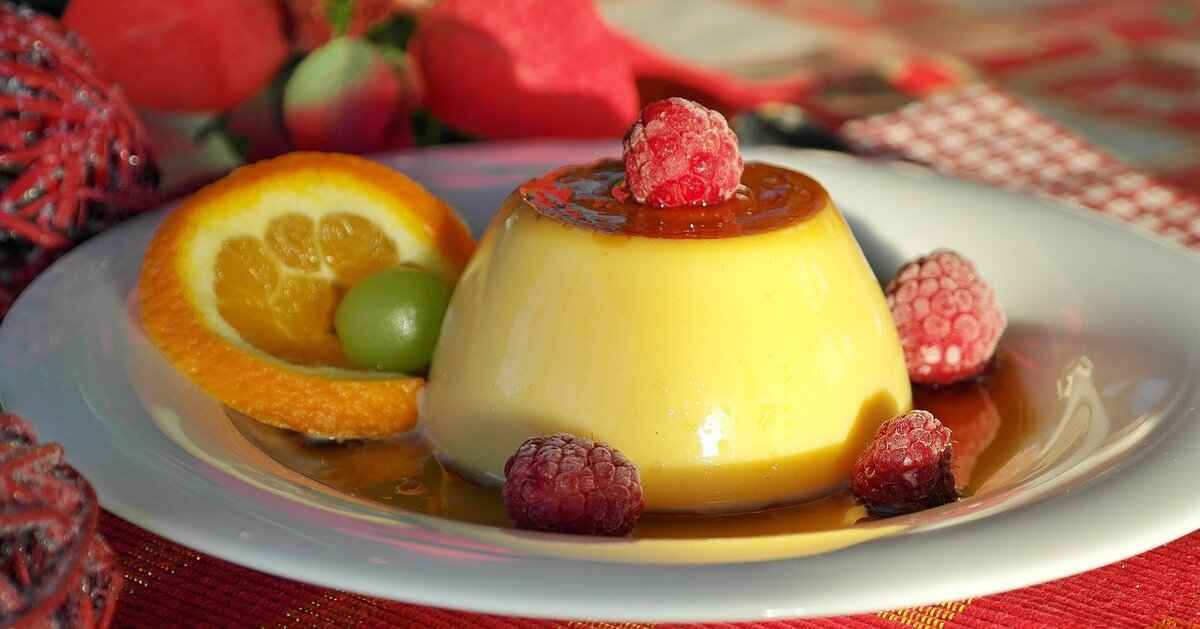
How to Store Chia Seed Coconut Milk Pudding?
Proper storage is essential for maintaining the freshness and quality of your chia seed coconut milk pudding. Following the right storage techniques not only preserves the flavor but also ensures that the pudding remains safe to eat. Here are some effective tips on how to store your leftovers and maximize their shelf life.
- Use Airtight Containers: Always store your pudding in airtight containers. This helps to prevent exposure to air, which can lead to oxidation and spoilage.
- Refrigeration: Place the container in the refrigerator immediately after preparing the pudding. Chia seed coconut milk pudding can typically last for about 5 to 7 days when stored properly in the fridge.
- Freezing for Long-Term Storage: If you want to keep your pudding for an extended period, consider freezing it. You can freeze the pudding in individual portions using ice cube trays or small containers. When ready to eat, simply thaw it in the refrigerator overnight.
- Check for Freshness: Before consuming leftover pudding, always check for any signs of spoilage, such as an off smell or unusual texture. If you notice any changes, it’s best to discard it.
When storing your pudding, it’s important to remember that the texture may change slightly after refrigeration or freezing. Chia seeds can absorb moisture, which may lead to a thicker consistency. If this occurs, simply stir in a little extra coconut milk to restore its creamy texture.
Additionally, if you plan to add toppings like fruits or nuts, it’s advisable to store these separately. This will prevent the toppings from becoming soggy and maintain their crunchiness and flavor.
By following these simple storage tips, you can enjoy your chia seed coconut milk pudding throughout the week without compromising its taste or quality. Proper storage not only enhances your culinary experience but also allows you to indulge in this healthy dessert with peace of mind.
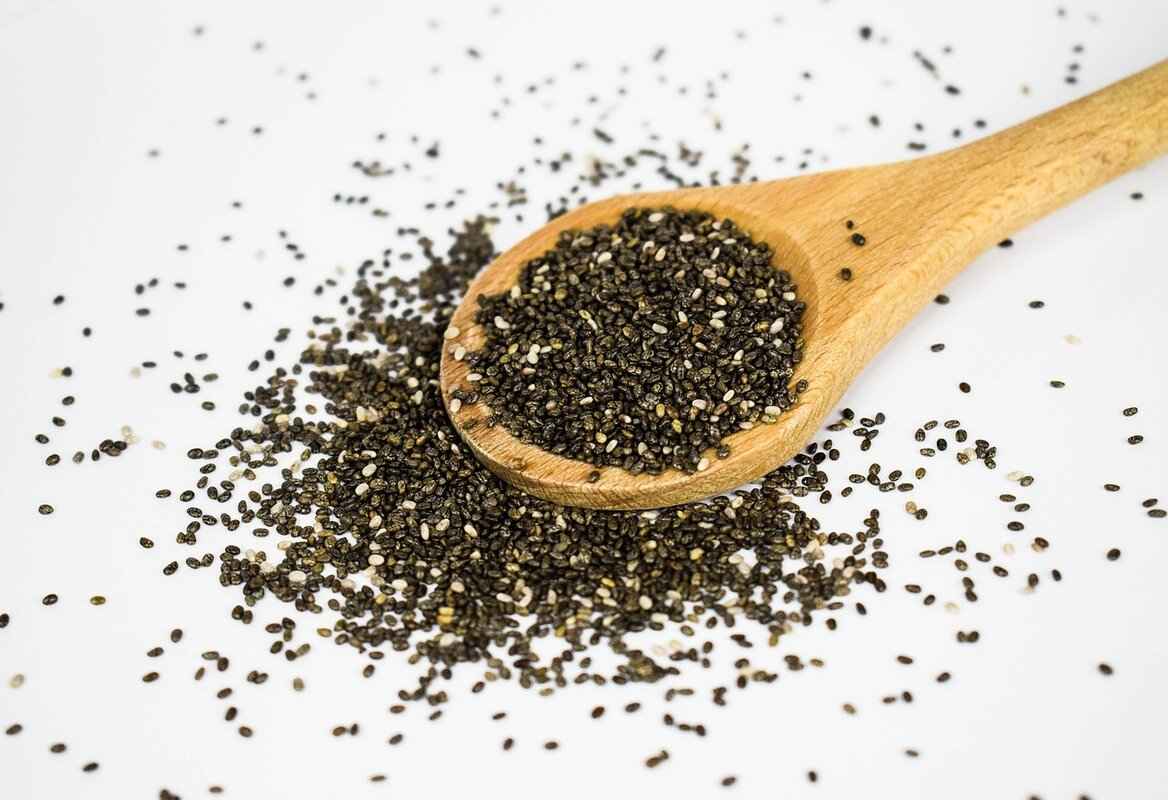
What Are the Nutritional Facts of Chia Seed Coconut Milk Pudding?
Understanding the nutritional content of your dessert is essential for making informed dietary choices. Chia seed coconut milk pudding is not only a delightful treat but also a healthy option packed with nutrients. This section provides a comprehensive breakdown of the calories, fats, proteins, and carbohydrates found in this delicious pudding.
| Nutrient | Amount per Serving (1 cup) |
|---|---|
| Calories | 210 |
| Total Fat | 15g |
| Saturated Fat | 13g |
| Cholesterol | 0mg |
| Sodium | 5mg |
| Total Carbohydrates | 18g |
| Dietary Fiber | 10g |
| Sugars | 5g |
| Protein | 5g |
Calories: Each serving of chia seed coconut milk pudding contains approximately 210 calories. This makes it a relatively low-calorie dessert compared to many traditional puddings that can be high in sugar and fats.
Total Fat: With about 15 grams of total fat, chia seed coconut milk pudding is rich in healthy fats, primarily from the coconut milk. These fats are beneficial for heart health and provide a feeling of fullness.
Protein: Each serving contains around 5 grams of protein, primarily from the chia seeds. This protein content is beneficial for muscle repair and overall health.
Carbohydrates: The pudding has about 18 grams of carbohydrates, which includes 10 grams of dietary fiber. The high fiber content aids in digestion and helps regulate blood sugar levels, making it a smart choice for those watching their carbohydrate intake.
Why is Fiber Important?: The fiber found in chia seeds is particularly noteworthy. It not only supports digestive health but also contributes to a feeling of satiety, which can help prevent overeating.
In summary, chia seed coconut milk pudding is a nutritious dessert option that provides a balanced mix of calories, healthy fats, proteins, and carbohydrates. By understanding its nutritional profile, you can enjoy this delightful treat while staying aligned with your health goals.
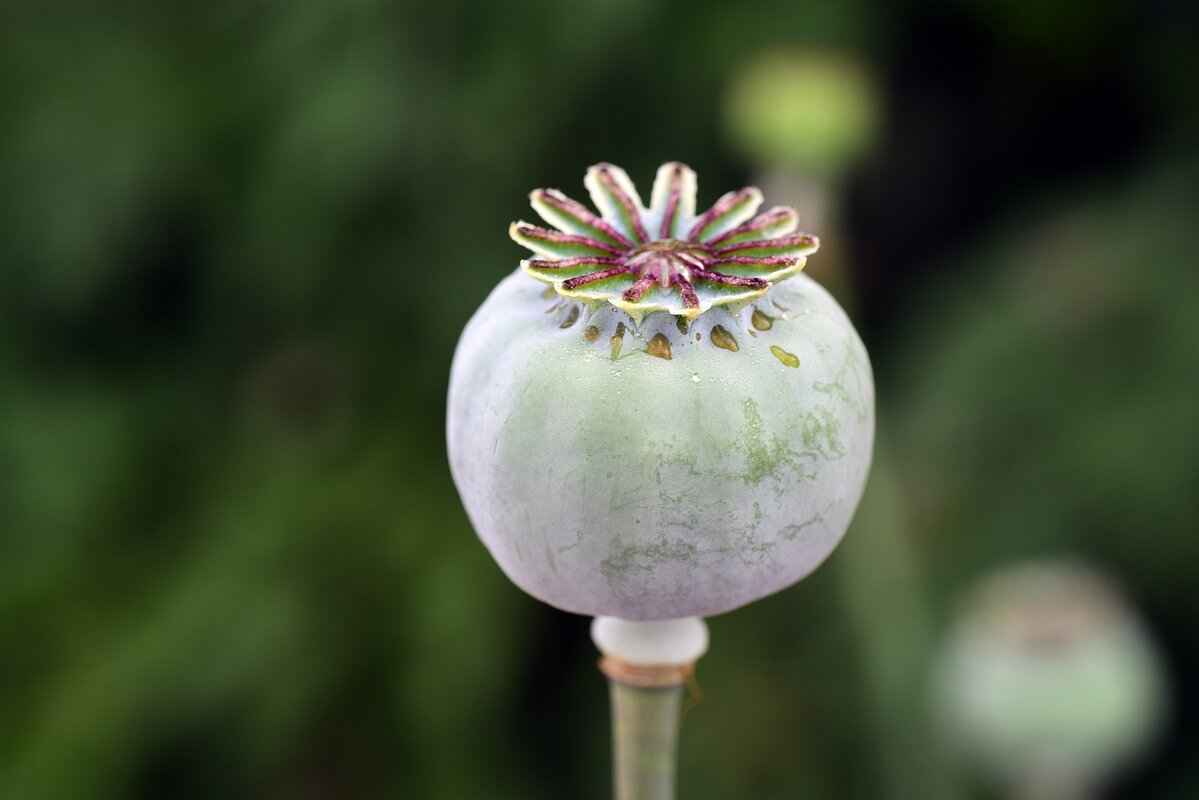
Is Chia Seed Coconut Milk Pudding Suitable for Special Diets?
Chia seed coconut milk pudding is not only a delicious dessert but also a versatile option for those with specific dietary requirements. This pudding can easily accommodate various diets, including vegan, gluten-free, and low-carb lifestyles. Let’s delve deeper into how this pudding can fit into these dietary preferences.
For individuals following a vegan diet, chia seed coconut milk pudding is an excellent choice. It is made using plant-based ingredients, ensuring that no animal products are included. Chia seeds, derived from the Salvia hispanica plant, are packed with nutrients and provide a great source of protein, making them a perfect substitute for dairy in desserts.
Many people are sensitive to gluten, and finding tasty desserts can be a challenge. Fortunately, chia seed coconut milk pudding is naturally gluten-free. Made without any grains or gluten-containing ingredients, it offers a safe and satisfying option for those with celiac disease or gluten intolerance. This pudding allows individuals to indulge in a sweet treat without worrying about their dietary restrictions.
For those adhering to a low-carb or ketogenic diet, chia seed coconut milk pudding can be a game-changer. Coconut milk is low in carbohydrates compared to traditional dairy milk, making it a suitable choice for those looking to reduce their carb intake. Furthermore, chia seeds are high in fiber, which can help to keep you feeling full without contributing significantly to your carbohydrate count.
One of the best features of chia seed coconut milk pudding is its customizability. You can easily modify the recipe to suit your specific dietary preferences. For example:
- Sweeteners: Use natural sweeteners like maple syrup or agave nectar for a vegan option, or opt for stevia or erythritol for a low-carb alternative.
- Flavorings: Add vanilla extract, cocoa powder, or spices like cinnamon to enhance the flavor while keeping it aligned with your dietary needs.
- Toppings: Fresh fruits, nuts, or seeds can be added to your pudding to provide additional nutrients and flavors.
Chia seeds are not just a trendy ingredient; they are also rich in omega-3 fatty acids, antioxidants, and essential minerals like calcium and magnesium. These nutrients contribute to heart health, improved digestion, and overall well-being. By incorporating chia seed coconut milk pudding into your diet, you can enjoy these benefits while satisfying your sweet tooth.
In summary, chia seed coconut milk pudding is a versatile dessert that caters to a variety of dietary needs. Whether you are vegan, gluten-free, or following a low-carb diet, this pudding can be adapted to fit your lifestyle. Its health benefits, combined with its delicious taste, make it a fantastic choice for anyone looking to indulge in a guilt-free treat.
Frequently Asked Questions
- What is chia seed coconut milk pudding?
Chia seed coconut milk pudding is a delicious, dairy-free dessert made by soaking chia seeds in coconut milk. It creates a creamy texture and is packed with nutrients, making it a healthy treat.
- How long does it take to prepare chia seed coconut milk pudding?
Preparation is quick! It usually takes about 10 minutes to mix the ingredients, but you’ll want to let it soak in the fridge for at least 2 hours (or overnight) to achieve the perfect pudding consistency.
- Can I use other types of milk?
Absolutely! While coconut milk adds a rich flavor, you can use almond milk, oat milk, or any other dairy-free milk of your choice. Just keep in mind that the taste and texture may vary slightly.
- Is this pudding suitable for kids?
Yes! Chia seed coconut milk pudding is a nutritious snack for kids. It’s fun to make and can be customized with their favorite toppings like fruits or chocolate.
- How do I store leftover pudding?
Store any leftover pudding in an airtight container in the refrigerator. It can last up to 5 days, but it’s best enjoyed fresh!
- Can I make this pudding ahead of time?
Definitely! In fact, making it a day ahead allows the flavors to meld beautifully. Just remember to give it a good stir before serving!














